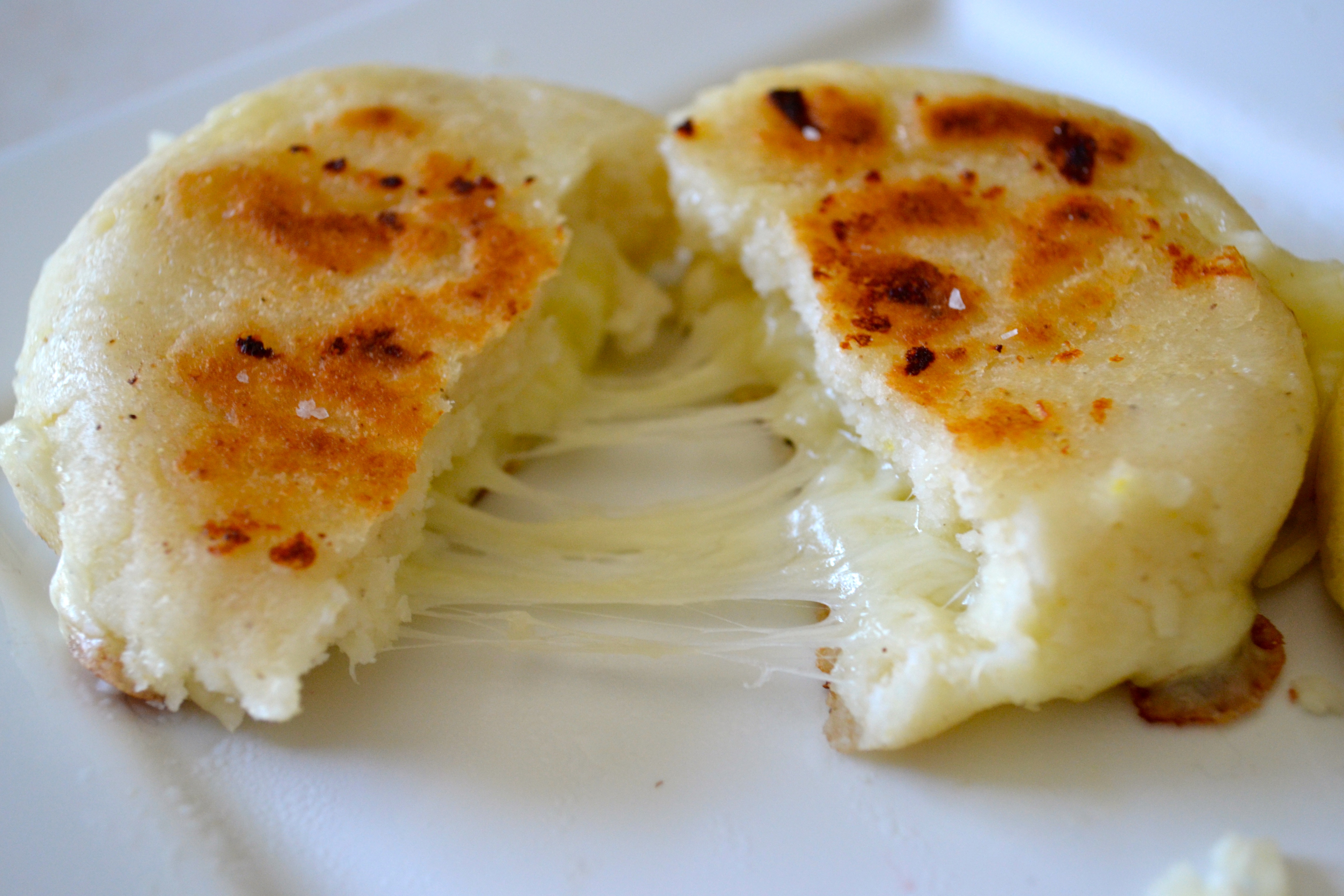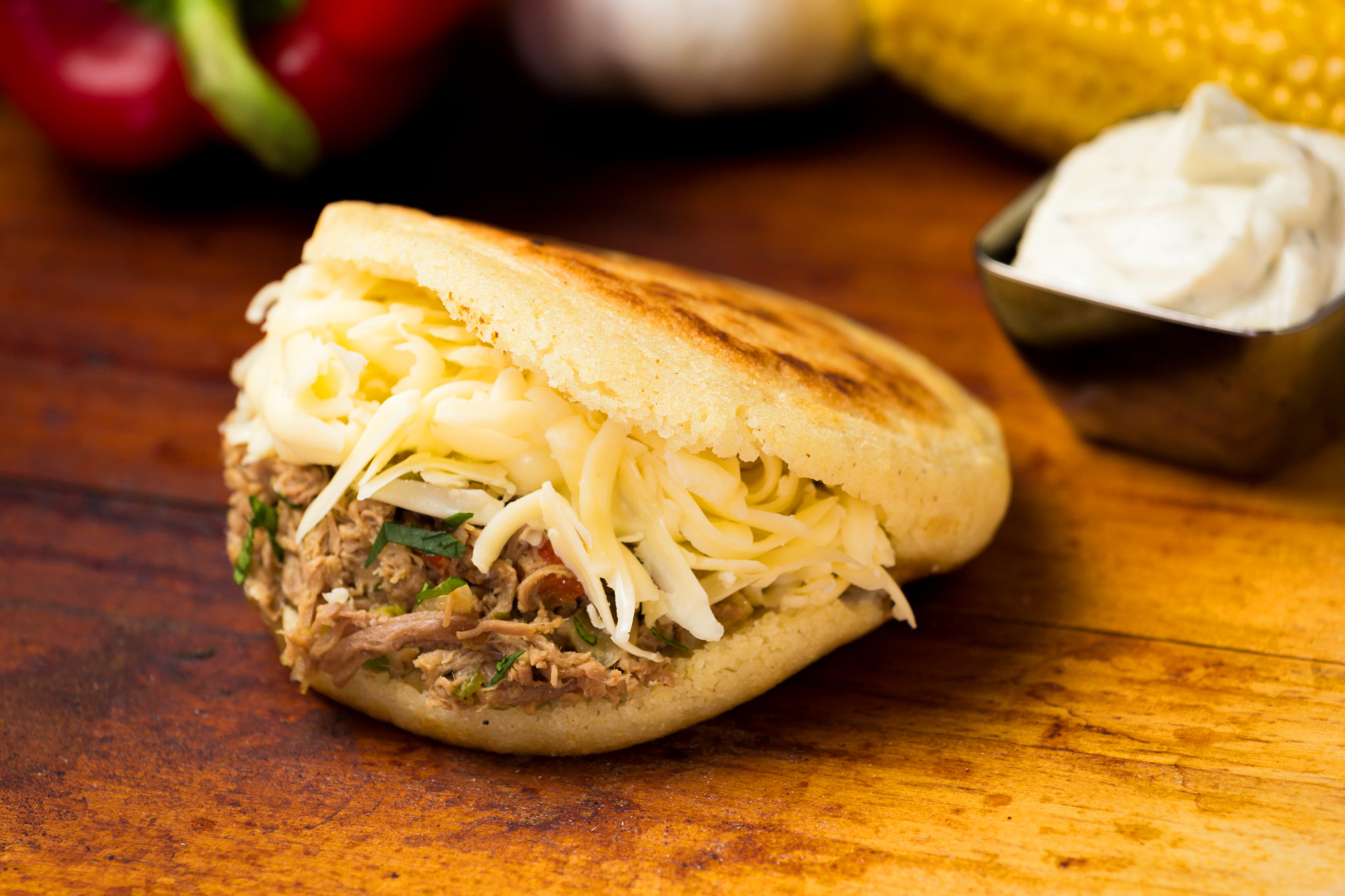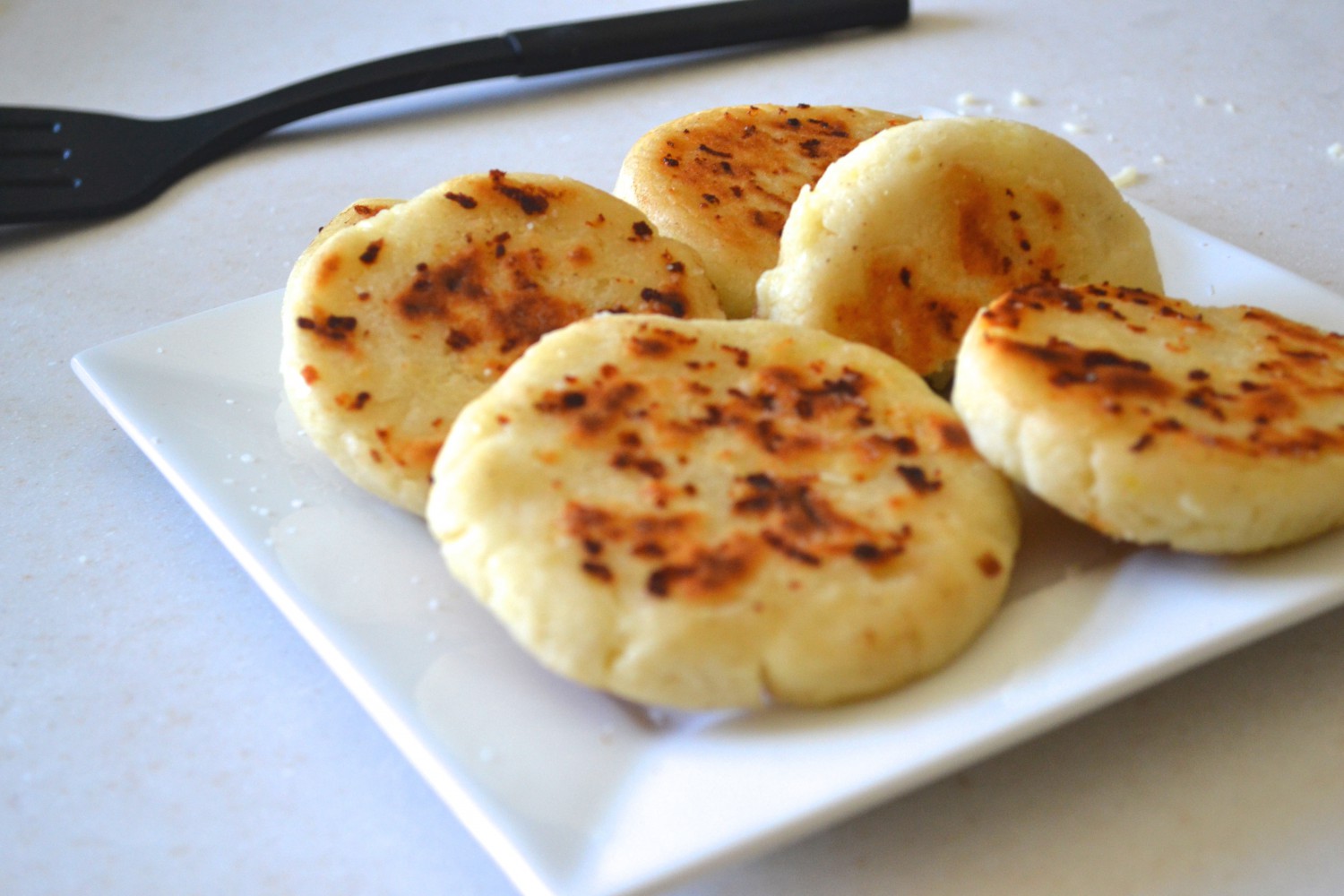Have you ever bitten into something so comforting, so deeply satisfying, that it just feels like a warm hug? For many, especially those with roots in South America, that feeling comes wrapped in an arepa. It’s a food that holds stories, that brings people together, and which, in the hands of someone truly dedicated, becomes something truly special. We're talking about the kind of simple pleasure that makes you want to learn how to recreate it yourself, maybe even share it with everyone you know. So, if you've ever wondered about these delightful cornmeal pockets, you're in for a treat.
These little cornmeal cakes, you know, they've been around for hundreds of years, originating in a part of the world that's now known as Colombia, Venezuela, and Panama. They were typically cooked on a special kind of flat pan, a budare, and that tradition, you see, still carries on today. It's really quite something how a simple food can have such a long and rich history, connecting generations through flavor and shared meals. People who grow up with them often have very fond memories tied to their taste and smell.
It's honestly a bit like a revelation when you try your first one. For instance, imagine a bite of an arepa that’s filled to the brim with savory black beans, tender beef, sweet plantains, and some salty, soft cheese. That moment, for some, is a turning point, sparking a desire to bring that taste right into their own kitchen. It's that kind of experience, a truly wonderful way to get a delicious meal, that makes you think, "I need to figure out how to make these at home." And that, my friend, is where the story of someone like Arepa George might begin, a passion for making these delightful creations.
Table of Contents
- Who is Arepa George?
- Arepa George - Personal Details and Background
- What Exactly is an Arepa?
- How Do Arepas Become So Good?
- Why Are Arepas Such a Beloved Food?
- Can You Make Arepas at Home? With Arepa George Tips!
- The Simple Magic of Arepas
- A Final Look at Arepa George's Passion
Who is Arepa George?
So, you might be wondering, who exactly is Arepa George? Well, in this story, Arepa George represents a person who has a deep, deep affection for arepas, perhaps someone who has made it their life's calling to perfect them or to introduce them to new folks. It's someone, you know, who understands that these cornmeal creations are more than just food; they're a piece of culture, a bit of warmth, a connection to a rich past. This individual, let's call him George, found himself completely taken by the simple yet profound satisfaction that comes from a perfectly made arepa.
Picture this: George, perhaps a person who grew up with these flavors, or maybe someone who discovered them later in life, but either way, he felt an immediate pull. It was, as a matter of fact, after experiencing that first amazing bite – the kind that just makes your taste buds sing – that he decided to truly dedicate himself to learning everything he could about them. This wasn't just a fleeting interest; it was a genuine, heartfelt commitment to mastering the craft. He wanted to understand the ingredients, the cooking methods, and the soul that goes into each and every one.
His journey, you could say, became all about sharing that special feeling. Whether he runs a small food stand, a cozy eatery, or simply loves to cook for friends and family, the name "Arepa George" comes to symbolize a dedication to quality and an authentic love for this particular food. It's someone who, through their efforts, brings a little piece of that South American comfort to wherever they are, making sure each person who tries their arepas gets to experience that same delightful moment he once did. It’s a pretty inspiring thing, really, to see that kind of passion for something so simple.
Arepa George - Personal Details and Background
While "Arepa George" might be a nickname, a sort of affectionate title given to someone truly devoted to the art of making arepas, we can imagine a few things about him. This isn't about a specific, real person, but rather a representation of the spirit of someone who pours their heart into this particular food. Let's think about what might make up the background of such a character, a person who embodies the love for these cornmeal delights.
He might have, for instance, a background rooted in one of the places where arepas are a daily staple, like Venezuela or Colombia. Or, perhaps, he discovered them later in life, maybe during a trip or through friends, and felt an instant connection. What’s clear is that his connection to arepas goes beyond just eating them; it’s about understanding their heritage and the happiness they bring. His personal details, in a way, are less about specific dates and more about his journey with this food.
This George, you know, could be someone who spent countless hours in kitchens, experimenting with different types of cornmeal, trying various cooking surfaces, and perfecting the balance of crispiness on the outside and softness within. His story would be one of trial and joyful discovery, of sharing his creations, and of seeing the smiles on people's faces as they take their first bite. That, basically, is the essence of "Arepa George" – a person dedicated to the simple, yet profound, pleasure of a well-made arepa.
| Characteristic | Description (for Arepa George) |
| Primary Passion | Creating and sharing authentic arepas. |
| Culinary Focus | Mastering traditional arepa preparation and fillings. |
| Geographic Connection | Deep appreciation for the culinary traditions of Colombia, Venezuela, and Panama. |
| Approach to Food | Emphasizes simplicity, quality ingredients, and homemade goodness. |
| Known For | Deliciously prepared arepas, often with classic fillings. |
| Influence | Inspiring others to try making arepas at home or to seek out authentic versions. |
What Exactly is an Arepa?
So, you hear "arepa" and you might picture a few things, but what are they, really? Well, in their most basic form, arepas are these lovely little round cakes made from cornmeal. They're typically about half an inch to three-quarters of an inch thick, and they're just a simple mix of cornmeal, a bit of salt, and some water. That’s it, honestly, for the foundation. They can be cooked in a few ways, too, either baked until golden or grilled to get those nice char marks. You often find them served alongside meals in places like Venezuela, kind of like how you'd have bread with dinner in Italy, or tortillas with your food in Mexico.
They are, in fact, one of the most widely enjoyed foods in both Colombia and Venezuela. You’ll find them in nearly every home, a true staple that brings comfort and sustenance to daily life. It's interesting, isn't it, how a food so straightforward can hold such a significant place in a culture? They aren't fancy, but they are incredibly satisfying, and that's a big part of their charm. They’re like the cornbread of these regions, a familiar and beloved presence on the table.
The beauty of an arepa, you see, comes from its simplicity and its versatility. While the base is just cornmeal, salt, and water, what you do with it after it's cooked is where the real fun begins. They can be split open, almost like a pita pocket, and filled with all sorts of delicious things. Think about it: savory meats, creamy cheeses, or even just a little butter and salt. It’s this adaptability that makes them perfect for any meal of the day, whether it's for breakfast, lunch, or even dinner. That’s a pretty neat trick for a simple corn cake, wouldn't you say?
How Do Arepas Become So Good?
You might be curious, how do these seemingly simple cornmeal cakes get to be so incredibly tasty? It's really quite fascinating, actually, because the secret lies in a particular ingredient and the way they're prepared. The main ingredient, the heart of an arepa, is a special kind of precooked cornmeal. This isn't just any cornmeal you might find; it's specifically known as "masarepa." You can find this particular type of cornmeal in many grocery stores, especially those with an international section, or at specialty food shops. It’s what gives arepas their unique texture and flavor, that's for sure.
The cooking process, too, plays a very important role in their appeal. When you cook an arepa, whether on a griddle or in an oven, something truly wonderful happens. They develop a delightful crispiness on the outside, a sort of golden crust that gives way with a gentle crunch. But then, as you bite deeper, you discover a soft, almost pillowy inside. This contrast in textures, you know, is a big part of what makes them so enjoyable to eat. It’s a very satisfying experience, that first bite.
And then there are the fillings, which, frankly, take an arepa from simply good to truly amazing. The plain arepa is nice with just some butter and a sprinkle of salt, but when you stuff it, that's where the magic really happens. Imagine the possibilities: tender shredded beef, succulent chicken, rich black beans, sweet fried plantains, or perhaps some melty, gooey cheese. Each filling adds its own layer of flavor and texture, turning a humble corn cake into a hearty, complete meal. It’s almost like a canvas for whatever deliciousness you want to add, and that’s pretty cool.
Why Are Arepas Such a Beloved Food?
It's a fair question, isn't it, why are arepas held in such high regard by so many people? Part of it, honestly, comes down to their deep cultural roots. They're not just a food item; they're a symbol of home, of family gatherings, and of shared traditions. For generations, they've been a consistent presence on breakfast tables, lunch plates, and dinner spreads in their native lands. This long history, you see, creates a powerful emotional connection, making them more than just something to eat. They evoke feelings of comfort and belonging, which is a big deal.
Then there's the fact that they're just so incredibly versatile, which makes them easy to fit into any meal. Whether you need a quick bite to start your day, a filling lunch, or a satisfying component for dinner, an arepa can usually fit the bill. You can pair them with almost anything, from a simple egg to a complex stew. This adaptability, you know, means they never get boring, and there’s always a new way to enjoy them. It's pretty neat how one food can be so many things to so many people.
And let's not forget the sheer simplicity of their creation, which also adds to their appeal. They're among the easiest things to prepare, really, because they only have one main ingredient – that special precooked cornmeal. This means that even someone who isn't a seasoned cook can learn to make them pretty quickly. The fact that they’re so accessible, both to make and to enjoy, certainly contributes to their widespread popularity. It’s a very democratic food, in a way, available to everyone.
Can You Make Arepas at Home? With Arepa George Tips!
So, after hearing all this, you might be thinking, "Can I actually make these at home?" And the answer, frankly, is a resounding yes! If you've never tried making arepas yourself, you really should give it a go. There are, you know, plenty of foolproof recipes out there that make the process quite straightforward. The beauty of it is that you don't need a lot of fancy equipment or a long list of obscure ingredients. It's actually a very approachable cooking project for anyone who loves good food.
One of the best things about making arepas at home, according to someone like Arepa George, is how few ingredients you actually need. We're talking about just three basic items: the special cornmeal (masarepa), some water, and a pinch of salt. That's it! It's like making a cornmeal flatbread, but without any yeast, so there's no waiting for dough to rise. This simplicity means you can whip up a batch pretty quickly, which is great for those times when you want something homemade but don't have a lot of time to spare.
And when it comes to cooking them, George might tell you, you have options. You can use a traditional budare if you happen to have one, but a regular non-stick pan or a griddle works just as well. Some people even like to bake them in the oven for a slightly different texture. The key is to get that lovely golden crust on the outside while keeping the inside soft and tender. Once they're cooked, you can slice them open and fill them with whatever your heart desires, making each arepa a little personalized meal. It’s pretty rewarding, that’s for sure, to make them yourself.
The Simple Magic of Arepas
There's a kind of quiet magic to arepas, you know, something in their very simplicity that makes them so appealing. They don't rely on complex flavors or intricate preparations. Instead, their charm comes from the honest goodness of corn, water, and salt, transformed into something truly satisfying. It's a bit like how a simple tune can be incredibly moving; the power is in its pure form. This straightforwardness is, in a way, what makes them so comforting and so accessible to everyone.
The texture, too, plays a very important role in this magic. That crispy exterior, which gives way to a soft, almost fluffy interior, is a delightful sensation. It's a contrast that makes each bite interesting and keeps you wanting more. Whether they're enjoyed plain with just a touch of butter, or bursting with a rich, savory filling, that textural experience is always there. It’s a pretty consistent pleasure, that’s for sure, with every single one.
And then there's the way they connect people. Arepas are often part of family meals, shared moments, and celebrations. They bring a sense of community and warmth to the table, making them more than just food. They become part of memories, part of traditions that are passed down through generations. This ability to foster connection, to bring smiles and comfort, is perhaps the most magical thing about them. They're really quite special in that regard.
A Final Look at Arepa George's Passion
Reflecting on "Arepa George," it's clear that this figure, whether real or symbolic, embodies a deep passion for a food that means so much to so many. It's a passion rooted in the simple joy of creating something delicious and sharing it with others. This dedication to arepas, from their ancient origins to their modern-day popularity, really highlights how food can be a powerful connector of culture, history, and personal happiness. It's a reminder that sometimes the most profound pleasures come from the most straightforward things.
The journey of someone like Arepa George, learning the nuances of masarepa, perfecting the griddle technique, and experimenting with various fillings, speaks to the heart of what makes food so compelling. It's about the care, the attention, and the love that goes into each creation. This kind of devotion, you know, transforms a simple cornmeal cake into a truly memorable eating experience. It’s pretty inspiring, honestly, to see that level of commitment.
Ultimately, the story of Arepa George, and the arepas themselves, is about the enduring appeal of comfort food. It's about how a dish that originated hundreds of years ago can still bring so much delight and satisfaction today. From the first bite of a perfectly made arepa – crispy on the outside, soft within, and generously filled – it's easy to understand why this food holds such a special place in people's hearts and on their tables. It's a testament to simple ingredients and a rich tradition, a truly wonderful combination.



Detail Author:
- Name : Anita Beatty
- Username : hmorar
- Email : lila.hamill@hotmail.com
- Birthdate : 1979-04-24
- Address : 4106 Bailey Terrace Apt. 820 New Yolandaland, NE 41657
- Phone : 1-909-482-3233
- Company : Moore, Legros and Kunze
- Job : Human Resources Manager
- Bio : Sit aliquid sunt est eum sequi. Id molestias sapiente minus. Quis quia illo ipsa deleniti. Itaque voluptas quia sed et.
Socials
twitter:
- url : https://twitter.com/blockb
- username : blockb
- bio : Dolore inventore nobis itaque harum. Labore aut consequuntur non. Consectetur ullam qui et beatae sint. Voluptatem sequi numquam a et deleniti omnis.
- followers : 4758
- following : 1691
facebook:
- url : https://facebook.com/block1979
- username : block1979
- bio : Temporibus sit ut modi accusamus.
- followers : 1614
- following : 1659
linkedin:
- url : https://linkedin.com/in/brent_block
- username : brent_block
- bio : Labore mollitia doloremque tempora ratione.
- followers : 6497
- following : 2041
tiktok:
- url : https://tiktok.com/@brentblock
- username : brentblock
- bio : Ad ea quo ratione in aut voluptatum.
- followers : 3289
- following : 1145
instagram:
- url : https://instagram.com/brent_block
- username : brent_block
- bio : Quisquam fugiat beatae voluptas recusandae. Ipsum debitis ipsam et.
- followers : 713
- following : 2701

